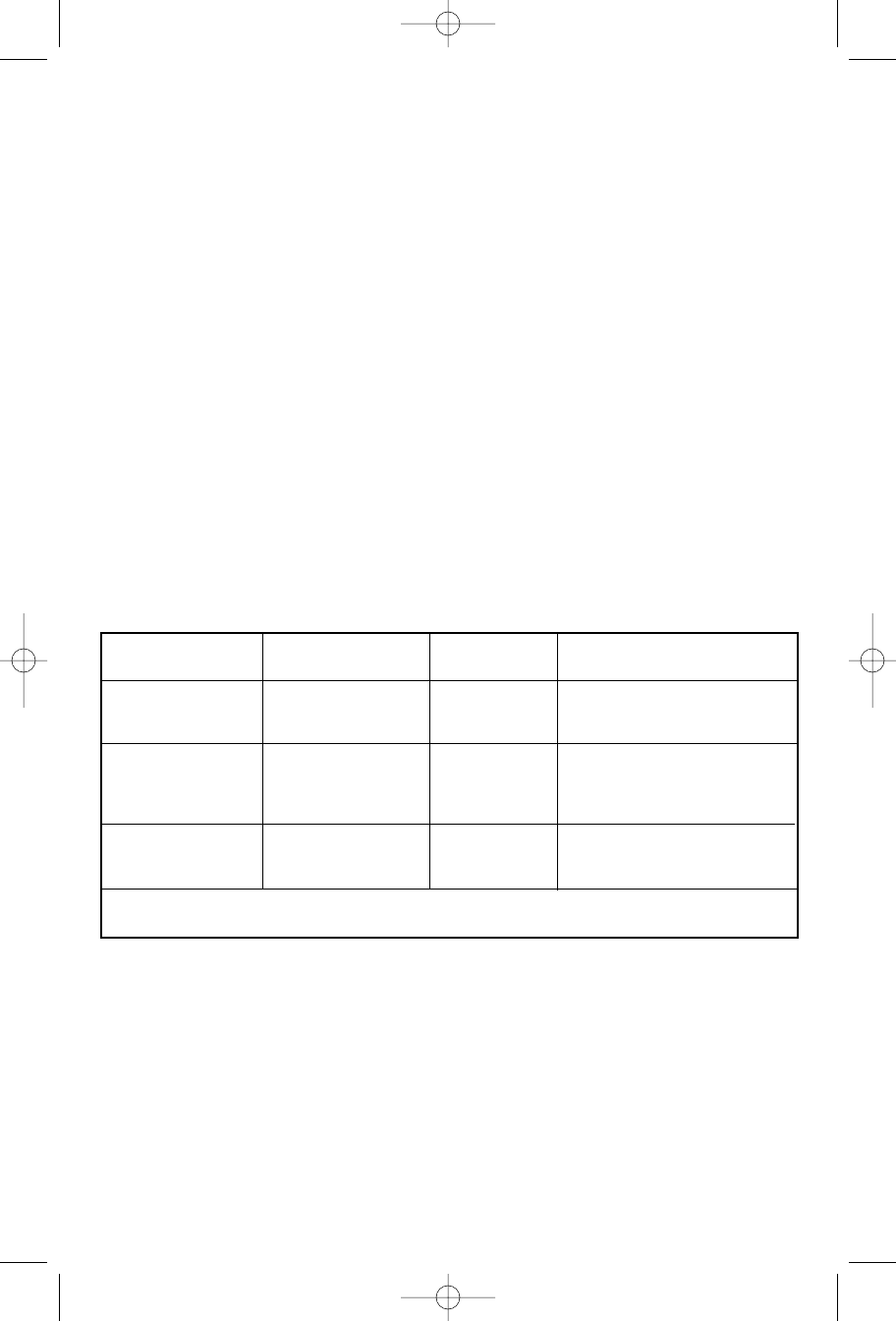
-9-
FLUSH SANDING
Your sander has been designed to allow
c
onvenient flush sanding on the right side of the
sander.
Sanding Tips
TECHNIQUE
Grasp the handles firmly. Start the sander with
the belt off the work (NOTE: never start or stop
the tool with the belt in contact with the work
surface). Place the heel of the sander on the
work first. Then, with a forward motion, begin
the sanding stroke as the machine is lowered
onto the work surface. This will prevent
gouging. Keep the sander moving so that your
work will be smooth and even. The stroke is
simply a back-and-forth movement with most of
the sanding done on the pull movement. Use a
light touch. The weight of the belt sander is the
only pressure required. Too much pressure will
slow the work by overloading the motor and
reducing belt speed. The result will be
decreased sanding efficiency. Sand slowly and
systematically and, when you stop, lift the
sander from the surface before stopping the
tool.
WOOD FINISHING
Take care to select belts wisely. For initial
s
moothing of rough lumber, use coarse or very
coarse grit and sand with the grain. On very
uneven or hard wood, sand diagonally (across
the grain). Be careful to avoid gouging. Now
switch to medium grit belt and sand with the
grain. This will provide a relatively level and
smooth finish. Now insert a fine grit belt for final
finishing. Always sand with the grain to remove
scratches left by coarser belts. Keep the sander
moving in long, light strokes during finishing
operations. As a final touch, experienced
sanders will often insert a “used” fine belt to
provide a smooth surface for filling, sealing,
brushing or spraying.
REFINISHING COATED WOOD
Your belt sander will also help remove old
paint, varnish or lacquer; however, if the
coating consists of several layers, remove as
much as possible with a paint solvent or
varnish remover before using the belt sander.
Use a hand scraper to remove the residue left
by the solvent and allow surface to dry
completely before sanding.
SANDING
OPERATION
PURPOSE ABRASIVE
TO USE
METHOD OF SANDING
ROUGH
PREPARATORY
FINISH
To level out uneven
surfaces.
Open Coat
Coarse Grit
Sanding diagonally to start
and finish up sanding
parallel with the grain.
To smooth the
rough sanding
preparatory to finish
sanding.
Open Coat
Medium Grit
Sanding parallel with the
wood grain.
The last sanding in
preparing the bare
wood for coating.
Open or
Closed Coat
Fine Grit
Sanding parallel with the
wood grain.
GUIDE FOR WOOD SANDING OPERATION
Remove all sanding dust thoroughly before coating. Use a soft brush or a vacuum cleaner
and hose to remove all dust from seams or crevices.
For fast removal, start with a coarse grit, open
coat belt. Change to closed coat belts, using
medium grits as the material shows through the
coating. When the covering is thin, use medium
grit to avoid scratching the material. Use short,
light strokes, moving the sander rapidly.
Excessive pressure or steady sanding in one
place will burn the coating and load the belt.
METAL FINISHING
For ferrous metals such as steel, stainless
steel, iron, etc., use coarse grit open coat belts
or coarse to fine grit closed coat belts,
depending on the finish desired. Non-ferrous
metals such as aluminum, solder, brass,
bronze, etc., can also be sanded. Beeswax or
tallow are recommended as lubricants for metal
sanding, polishing or satin finishing to minimize
belt loading and to lengthen belt life. To use,
simply rub the lubricant on the belt from time to
time. SAE No. 10 or 20 lubricating oil can also
be used to assure a smooth scratch free
surface. Just wipe the oil on the surface prior to
sanding.
SM 2610929106 3-05 3/15/05 10:33 PM Page 9


















